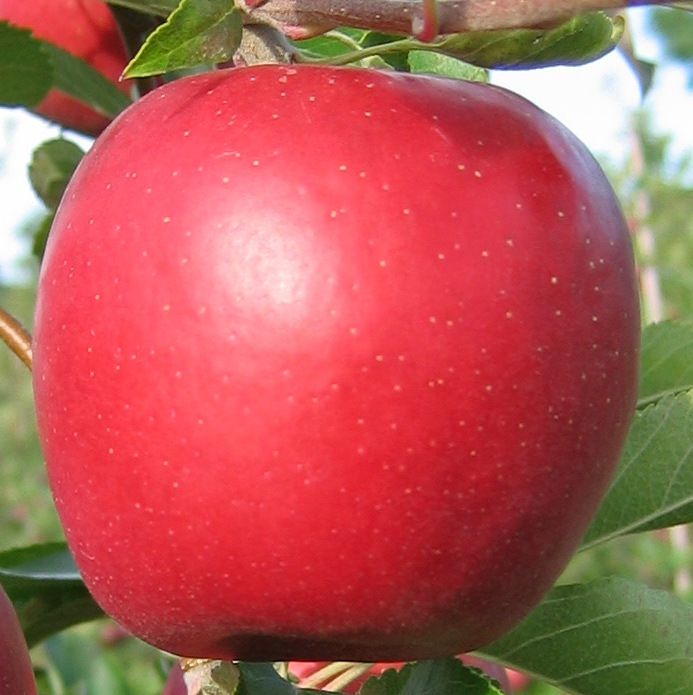N.Y. Apple Names Revealed
After years of development and consumer testing as “NY1” and “NY2,” two new apple varieties have received names from Cornell University and New York Apple Growers (NYAG) that embody their special assets: SnapDragon and RubyFrost.
The names were revealed Aug. 1 by Jeff Crist, vice chairman of the NYAG board of directors, at the annual Fruit Field Days at the New York State Agricultural Experiment Station in Geneva, where Cornell breeder and Horticulture Professor Susan Brown developed the varieties.
 “SnapDragon is a great name for this apple, because consumers found its crispy texture and sweet flavor so appealing,” explained apple grower Mark Russell, a member of NYAG.
“SnapDragon is a great name for this apple, because consumers found its crispy texture and sweet flavor so appealing,” explained apple grower Mark Russell, a member of NYAG.
Previously known as NY1, SnapDragon (left) derives its juicy crispness from its Honeycrisp parent, and the fruit packs a spicy-sweet flavor that won over taste testers. According to Russell, it should be a popular apple for snacking, especially for kids.
“The taste, the crispness and the juiciness impressed us,” said Brown, who subsequently fast-tracked the apple for commercialization. “Retailers will appreciate its other qualities as well, because although SnapDragon’s harvest window starts relatively early – in late September – its long storage and shelf life mean retailers may be able to offer it with consistent quality for a longer time than Honeycrisp.”
RubyFrost, the apple formerly known as NY2 (right), ripens later in the fall and stores well, so it will be able to provide a shot of vitamin C well into winter. Brown predicted it would take off with Empire and Granny Smith enthusiasts.
“I think juicy and refreshing when I eat a RubyFrost,” noted Russell. “It’s a fascinating apple, with a beautiful skin and a nice sugar-acid balance, but to me the crisp juiciness is rewarding every time.”
nice sugar-acid balance, but to me the crisp juiciness is rewarding every time.”
A decade in the making, the apples represent a first for the Cornell apple-breeding program and the New York apple industry in the way they’ve gone to market. Previously, public universities developed new apple breeds and released them to the industry freely. In 1980, however, the Bayh-Dole Act gave universities the ability to retain the intellectual property rights for their research, with limited plant-based royalties.
In May 2010, Cornell formed a partnership for a managed release with NYAG to establish an exclusive licensing agreement in North America for the two apple varieties. Under the agreement, growers pay royalties on trees purchased, acreage planted and fruit produced, with the income going to market the new varieties and support Cornell’s apple-breeding program.
The first trees were planted in farmers’ orchards in 2011; currently, 400 acres are growing across the Empire State. According to NYAG, the still-young trees will produce only a limited crop in 2013, but eager consumers can seek out SnapDragon and RubyFrost at select NYAG farmstands across the state. By 2015, the varieties are expected to be a familiar sight in grocery stores.
As well as SnapDragon and RubyFrost, Cornell has released 66 apple varieties since the late 1890s, including the Cortland, Macoun, Empire and Jonagold. Brown herself has developed the highly popular Fortune and Autumncrisp varieties, in addition to 11 cherry varieties.
